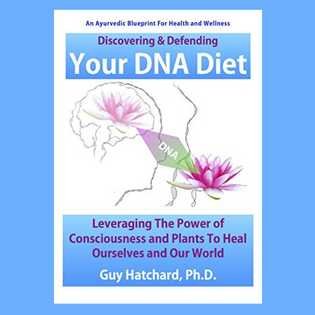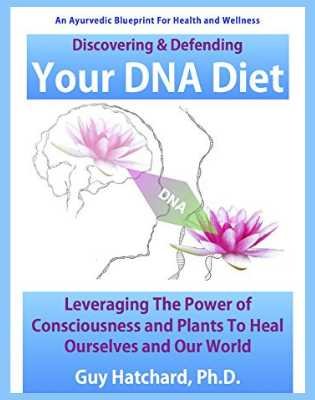Spoiler alert:
Neither will be able to improve NZ’s appalling health outcomes!
On the 16th of September, Newshub Nation hosted a debate between Dr. Ayesha Verrall, Minister of Health, and Dr. Shane Reti, Health Spokesperson of the National Party, who debated together in the midst of our healthcare crisis of unprecedented proportions. They sparred over health targets, the training of GPs, health funding, waiting lists for surgery, long wait times for emergency treatment, and staff shortages.
This article is also available as a PDF document to print/download and share. You can also listen to an audio version here.
Has New Zealand become healthier under Labour, or would it become more healthy under National?
Verrall made an extraordinary claim, which we fact check as FALSE. She claimed:
“Post Covid over the last three years we have had some of the lowest excess mortality in the world, so on the things that matter we are doing well”
How far wrong was Verrall? The OECD publishes comparable data on excess mortality (the difference between current figures and the historical rates) for 32 countries which we have analysed for 2020-2023 as follows:
In 2020, New Zealand closed its borders and avoided Covid infections almost completely. We had exactly zero excess deaths. In other words a normal year for mortality rates. We ranked 31 out of 32 countries, the second lowest rate of excess deaths for 2020.
In 2021, our borders remained largely closed for the first half of the year. We started the mRNA vaccination programme in February. According to the OECD, our excess death rate rose to 6.9% above the historical average, representing 2,168 deaths more than usual. We ranked 27th out of 32 countries despite having very few Covid related deaths.
By 2022, our borders were fully open and we had reached around 85% of the eligible population vaccinated. Our excess death rate rose to 17.5% above the historical average. The seventh highest among OECD countries. There were 5,699 more deaths than usual, 109 per week.
In 2023 (up to week 30), our excess death rate is 15.4% above the historical average. We currently have the third highest rate of excess deaths in the OECD. If this trend continues for the rest of the year we will have had 4,862 excess deaths for 2023.
In total, for the period 2020 to 2023 (up to week 30) we have had 10,672 excess deaths. There have been a total of 3,200 deaths with Covid for the same period. Many of these deaths were not actually caused by Covid. For the whole period, New Zealand ranks 15th out of 32 OECD nations, about mid-table.
Countries performing about the same as us include Australia, Portugal, Spain and the UK. Countries performing considerably better than us include Sweden, Norway, Belgium, and Latvia. Countries performing less well than NZ include the USA, Colombia, and Chile.
When I hear statements like Verrall’s false claim above that we are a world leader in Covid health outcomes, I used to feel angry. As I have analysed the figures more fully, I have realised that our politicians are suffering from a loss of fluid intelligence. They need help. They have become impervious to fact and independent advice.
Will Labour or National Policies improve outcomes?
To answer this question, we need to examine not just mortality data but also hospitalisation. The most reliable up to date figures that we have result from a leak of data from the Wellington Region that we reported here and here. At the time we extrapolated:
“If the leaked data patterns are being repeated across the nation (a reasonable assumption), in the year April 2022 to March 2023 alone, there will have been 14,600 additional hospitalisations for heart attacks, 9,700 additional cases of myocarditis, 8,200 additional cases of kidney injury, 1,600 additional miscarriages, 1,800 additional stillbirths and 10,500 additional strokes.”
Here’s the rub: These rates are so large that it is no wonder that our health service is overwhelmed and no wonder that despite the huge amount of money that Labour has thrown at the health service, we are performing among the worst in the world. A few extra cardiac beds or consultants cannot contain a 83% jump in hospitalisation for heart attacks under any circumstances.
Neither Verrall nor Reti addressed the fundamental problem that the research we have been reporting here and here for months reveals:
As long as we continue Covid mRNA vaccinations (or other upcoming novel mRNA vaccinations) our health service will be unable to cope no matter how much more money we expend or foreign personnel we recruit.
mRNA vaccines are so damaging to health that a functioning health service is an impossibility until we stop administering them.
Our health system could not have coped with even a small increase in conditions requiring treatment, instead we are facing a tsunami of ill health and family tragedies.
A September 2023 study of healthcare worker vaccination outcomes reports the following conclusion for example:
“In the light of further COVID-19 infection waves and booster vaccinations, there is a risk of additional staff shortages due to post-vaccination inability to work, which could negatively impact the already strained healthcare system and jeopardise patient care.”
Neither Labour, ACT, Greens, nor National are prepared to read the latest studies, take account of the published data, and admit the obvious. So what can we do about it in the upcoming election? Mathematics can help us out.
A Roy Morgan poll found that 5% of NZers support a minor party outside of parliament who, on current showing, have very little chance of being elected. These parties are being supported by many people who are concerned about the pandemic policies that we discuss in our reports. They are worried that the major parties appear ready to continue such damaging policies into the future.
Unfortunately, despite the sincerity of many of the candidates standing for minor parties, a vote for an unelectable party is not just a wasted vote, it is a vote for the major parties. Let me explain. If there was no 5% threshold, the distribution of votes and seats on current polling would be as follows.
PARTY PERCENT SEATS
Green 10% 12
National 39% 47
ACT 10% 12
Labour 28% 34
Maori 3% 4
NZ First 5% 6
5 Other Parties 5% 6
National and ACT together would be unable to form a governing majority. However, under the current system, once the votes are counted, the 5% of votes for parties failing to reach the threshold are discarded, and the actual representation would be as follows:
PARTY PERCENT SEATS
Green 10.53% 13
National 41.05% 49
ACT 10.53% 13
Labour 29.47% 35
Maori 3.16% 4
NZ First 5.26% 6
National and ACT would be able to govern together with a working majority. Therefore, a vote for a minor party with little or no chance of attaining the 5% threshold is actually a vote for a National ACT coalition. This will result in the deregulation of biotechnology, precisely the opposite of the hopes of many people currently planning to vote for minor parties.
In contrast, if more people switched their party votes from minor parties to NZ First, there will be a better chance that Winston might secure a wide ranging investigation of Covid policies and supply a moderating influence upon the more extreme policies proposed by ACT and National.
I realise that many people wish to use their vote to make a statement of concern or disgust with the last parliamentary term, but due to the mathematics the net effect will be the opposite. We can vote for our preferred candidate in our electorate, but don’t waste the Party Vote. It will determine the outcome. During the next three years, it might be possible for those aspiring for new political leadership to become more organised and united in their efforts. A necessary step towards parliamentary representation.
Just remember that Shane Reti and Ayesha Verrall failed to grasp or even mention the implications of the latest Covid research in their debate. The health policies of both parties will fail if mRNA injections continue to be promoted as both currently plan. In real terms, our life expectancy and well being will be diminished. There will be more deaths, more vaccine injuries, and increased inability to access needed treatment.






